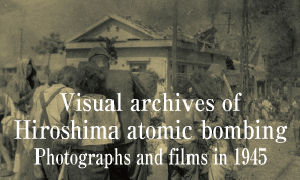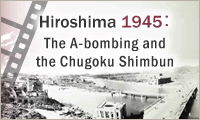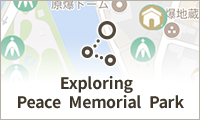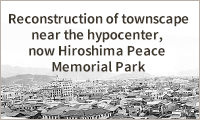Photographs of the Dead Speak
Jun. 27, 2025
Being the newspaper based in the A-bombed city, from 1997 to 2000 the Chugoku Shimbun unearthed and reported on the “life and death” of every individual killed at the hypocenter.
What happened after use of nuclear weapons, a creation of the 20th century? Who died and how? What did their parents, brothers, sisters, spouses, and children think of their deaths?
To convey the reality of the atomic bombing to people living in the 21st century, we looked for photos of those whose death was caused by the atomic bombing and reached out to their surviving family so they could provide a life story and memory of the dead.
With the cooperation of bereaved family members and others, the Chugoku Shimbun was able to confirm the circumstances of 2,342 people who died by the end of 1945 and 27 others who died between 1946 and 1962. Of this total, 85% lost their lives on the day of the bombing. Most of the photographs of 1,882 people, including 21 who died between 1946 and 1959, are held in the Hiroshima National Peace Memorial Hall for the Atomic Bomb Victims, established in the Peace Memorial Park in 2002.
The photographs and records of each victim will be made available one by one on a new website that will open in August.
As Centuries Pass, Part I: Images of horrific power and human tragedy speak
As Centuries Pass, Part II: Memories that must not be forgotten
Districts
Nakajima Honmachi, Part I: Aioi Bridge, target of the atomic bomb
Nakajima Honmachi, Part II: Appeal for peace from the dead
Tenjin-machi Kitagumi: Lives lost in a flash
Tenjin-machi Minamigumi: Mourning for a neighborhood that once lay along Peace Boulevard
Zaimoku-cho, Part I: A neighborhood of tradition, lost to the bomb
Zaimoku-cho, Part II: A temple for comfort becomes a park for prayer
Motoyanagi-machi: Thousands of lives lost in a river of tears
Sarugaku-cho, a neighborhood by the Atomic Bomb Dome
Saiku-machi: The hypocenter, “a crumbling world”
Schools
Hiroshima Second Middle School: Children at the hypocenter
Second-year students of Hiroshima First Municipal Girls High School: Girls deprived of a future
First-year students of Hiroshima First Municipal Girls High School: Girls with dreams for the future
Business facilities
Hiroshima Post Office: Death in the line of duty
What happened after use of nuclear weapons, a creation of the 20th century? Who died and how? What did their parents, brothers, sisters, spouses, and children think of their deaths?
To convey the reality of the atomic bombing to people living in the 21st century, we looked for photos of those whose death was caused by the atomic bombing and reached out to their surviving family so they could provide a life story and memory of the dead.
With the cooperation of bereaved family members and others, the Chugoku Shimbun was able to confirm the circumstances of 2,342 people who died by the end of 1945 and 27 others who died between 1946 and 1962. Of this total, 85% lost their lives on the day of the bombing. Most of the photographs of 1,882 people, including 21 who died between 1946 and 1959, are held in the Hiroshima National Peace Memorial Hall for the Atomic Bomb Victims, established in the Peace Memorial Park in 2002.
The photographs and records of each victim will be made available one by one on a new website that will open in August.
As Centuries Pass, Part I: Images of horrific power and human tragedy speak
As Centuries Pass, Part II: Memories that must not be forgotten
Districts
Nakajima Honmachi, Part I: Aioi Bridge, target of the atomic bomb
Nakajima Honmachi, Part II: Appeal for peace from the dead
Tenjin-machi Kitagumi: Lives lost in a flash
Tenjin-machi Minamigumi: Mourning for a neighborhood that once lay along Peace Boulevard
Zaimoku-cho, Part I: A neighborhood of tradition, lost to the bomb
Zaimoku-cho, Part II: A temple for comfort becomes a park for prayer
Motoyanagi-machi: Thousands of lives lost in a river of tears
Sarugaku-cho, a neighborhood by the Atomic Bomb Dome
Saiku-machi: The hypocenter, “a crumbling world”
Schools
Hiroshima Second Middle School: Children at the hypocenter
Second-year students of Hiroshima First Municipal Girls High School: Girls deprived of a future
First-year students of Hiroshima First Municipal Girls High School: Girls with dreams for the future
Business facilities
Hiroshima Post Office: Death in the line of duty






